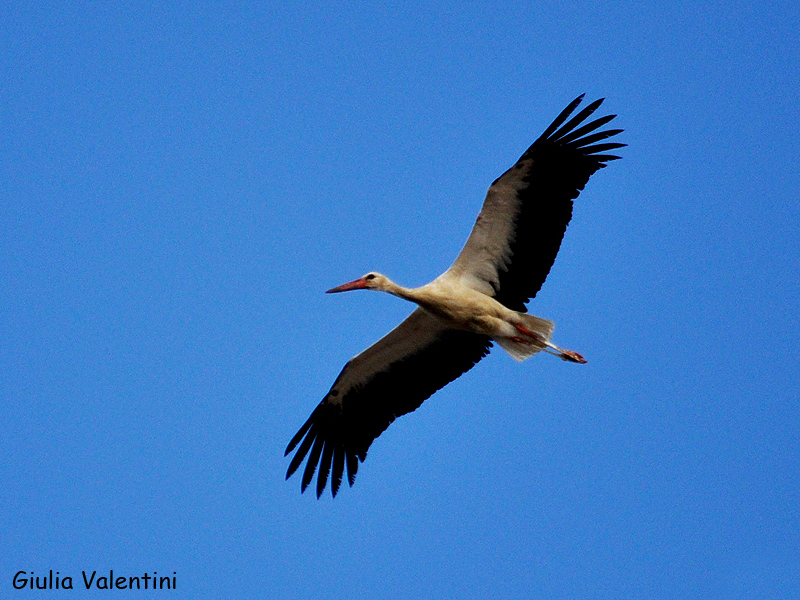White Stork
Scientific Name: Ciconia ciconiaMaltese Name: Cikonja Bajda
Family: Herons, Storks and Ibises (Ciconiiformes)
Occurence: Rare
Breeds in Malta: No
Overview:
The White Stork is a large bird in the stork family, breeding in the warmer parts of Europe, northwest Africa, and southwest Asia. It is a strong migrant, wintering mainly in tropical Africa, down to the south of South Africa, and also in the Indian subcontinent. It is a huge bird, tall, with a 155–200 cm wingspan. It is completely white except for the black wing flight feathers, and its red bill and legs, which are black on juveniles. It walks slowly and steadily on the ground. Like all storks, it flies with its neck outstretched.
White Storks rely on movement between thermals of hot air for long distance flight, taking great advantage of them during annual migrations between Europe and Sub-Saharan Africa. The shortest route south would take them over the Mediterranean, but since thermals only form over land, storks take a detour. This leaves two narrow migration corridors: eastern storks cross the straits of Bosporus to Turkey while western ones fly through the straits of Gibraltar.
White storks breed in open farmland areas with access to marshy wetlands, building a stick nest in trees, on buildings, or special platforms. Because it is viewed as bird of good luck, it is not persecuted, and often nests close to human habitation. In southern Europe, storks' nests can be seen on churches and other buildings. It often forms small colonies. Like most of its relatives, it feeds on fish, frogs and insects but also eats small reptiles, rodents and smaller birds.
Status:
Rare migrant, both in spring and autumn. Usually 2 to 3 sightings per year, mostly of singles but sometimes recorded in small flocks. On 14th September 2010 a flock of 28 White Stork, accompanied by 1 Black Stork, was seen from Buskett. This was the largest flock ever recorded in Malta. Unfortunately most of the White Storks that visit the Maltese Islands end up getting shot by poachers.
When to See:
March till May in Spring, August till September in Autumn. It is more common in Autumn than in Spring.
Where to See:
Can be seen from anywhere flying over. Buskett and Dwejra are good spots.
Photographs:
 |
White Stork, 15th September 2010, Dingli |
 |
28 White Stork and 1 Black Stork, 14th September 2010, Buskett |
 |
White Stork, 15th September 2010, Dingli |
Back to Bird Species List